Can Afghanistan transcend its dubious legacy of terrorism?
Madrassas in Pakistan and Afghanistan, often funded by Gulf states, have spread extremist ideologies. Saudi-financed madrasas in Pakistan taught Wahhabism, fostering a transnational network of militants using Afghanistan as a base. The U.S. and Saudi Arabia provided substantial aid and funding to these madrassas and the Mujahideen, promoting jihad against the Soviets.
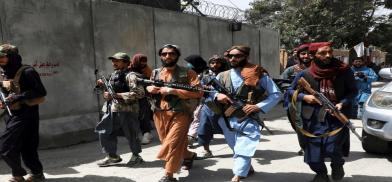
The resurgence of terrorism in Afghanistan under the Taliban has reignited longstanding concerns about the region’s role as a breeding ground for extremist activities. Since the Taliban's return to power in August 2021, there has been a sharp rise in cross-border terrorism. Pakistan's National Counter Terrorism Authority (NACTA) reported a staggering 51% increase in terrorist attacks in Pakistan in 2022 compared to the previous year, with many incidents linked to groups operating from Afghan territory.
The Taliban’s resurgence has afforded sanctuary to various militant organizations, including the Tehrik-i-Taliban Pakistan (TTP), which has regrouped and escalated its assaults against Pakistan. In 2023 alone, the TTP claimed responsibility for over 80 attacks in Pakistan, inflicting significant casualties and destabilizing the border regions.
To comprehend the current surge in Afghan-sponsored terrorism, it is essential to examine the historical and contemporary factors that have shaped Afghanistan’s complex relationship with extremism.
Historical context
Afghanistan's geopolitical location has made it a battleground for empires and ideological conflicts. From the Great Game between the British Empire and Tsarist Russia in the 19th century to the Soviet invasion in 1979, Afghanistan has often been caught in the crossfire of external powers. Each of these interventions has left a lasting impact on its social and political structures.
The Soviet-Afghan War (1979-1989) is particularly significant. The U.S. and its allies funded and armed the Afghan Mujahideen to counter Soviet influence, inadvertently fostering a breeding ground for radical ideologies. Operation Cyclone was the code name for the United States Central Intelligence Agency (CIA) covert program to arm and finance the Jihadi warriors, mujahideen, in Afghanistan from 1979 to 1989, before and during the military intervention by the USSR in support of its client, the Democratic Republic of Afghanistan. The program leaned heavily toward supporting militant Islamic groups that were favored by the regime of Muhammad Zia-ul-Haq in neighboring Pakistan, rather than less ideological Afghan resistance groups that had been fighting the Marxist-oriented Democratic Republic of Afghanistan regime since before the Soviet intervention. Operation Cyclone was one of the longest and most expensive covert CIA operations ever undertaken. The withdrawal of the Soviets did not bring peace; instead, it led to a power vacuum and civil war, further destabilizing the region.
Social and cultural dimensions
Afghanistan's tribal society is another key factor. The country is home to a myriad of ethnic groups, including Pashtuns, Tajiks, Hazaras, and Uzbeks, each with distinct cultural practices and loyalties. This tribal system often supersedes national identity, complicating efforts to establish a unified state. Tribal leaders and warlords have historically wielded significant power, often aligning with or against external powers based on their interests.
Sumit Guha’s interpretation of tribalism and state formation, as outlined in his book "Tribe and State in Asia Through Twenty-Five Centuries," supports this view. Guha argues that tribal identities frequently supersede national identities, especially in regions with complex historical interactions between tribes and states. He calls it the “political ecology of tribal life.” In Afghanistan, deep-rooted tribal affiliations and loyalties create a political landscape where national identity is often secondary to tribal connections. Guha’s interdisciplinary approach reveals that tribal societies are not merely obstacles to state-building but active participants that shape political processes. (Tribe and State in Asia through Twenty-Five Centuries, 2021). This dynamic is evident in Afghanistan, where tribal leaders and warlords leverage their influence to navigate, negotiate, and sometimes resist state structures, further complicating the establishment of a cohesive national identity.
Education and literacy rates in Afghanistan are among the lowest in the world, particularly in rural areas where extremist ideologies can take root more easily. According to UNESCO, the literacy rate of Afghanistan in 2022 was 37.3% (22.6% for women and 52.1% for men) as of 2023. This lack of education contributes to the spread of radicalism, as individuals are more susceptible to manipulation and propaganda.
Religious factors
Religious extremism has played a pivotal role in Afghanistan's history of terrorism. The Taliban's interpretation of Islam, influenced by Deobandi and Wahhabi ideologies, promotes strict, militant governance. This has attracted foreign fighters and fostered local support for terrorist activities.
The radical Islamization of Afghanistan began during the Soviet-Afghan War, with the CIA initiating moves to unite Muslims against the occupying communist forces. The United States, allied with Pakistan, supported militant groups like the Taliban to counter Soviet influence, hoping to create an anti-Iranian, anti-Shi’a movement. These short-sighted policies, driven by narrow interests, left a lasting impact on Afghanistan, making it fertile ground for terrorism.
Madrassas in Pakistan and Afghanistan, often funded by Gulf states, have spread extremist ideologies. Saudi-financed madrasas in Pakistan taught Wahhabism, fostering a transnational network of militants using Afghanistan as a base. The U.S. and Saudi Arabia provided substantial aid and funding to these madrassas and the Mujahideen, promoting jihad against the Soviets. Textbooks used in these schools emphasized jihad, featuring violent imagery and militant teachings, further entrenching extremism.
Thus, the confluence of radical religious ideologies, Cold War policies, and the influence of extremist madrasas has entrenched religious extremism in Afghanistan, making it a hub for terrorism.
Economic factors
Afghanistan's economy is another critical aspect to consider. The country is one of the poorest in the world, with a GDP per capita of 372.62 US dollars in 2022. Poverty is impacting more than 90% of the country’s population, with over half of Afghans reliant on humanitarian aid. Widespread poverty and unemployment make it easier for terrorist groups to recruit young men who see few other options for survival.
The illicit drug trade, particularly opium production, has also fueled terrorism. Afghanistan produces about 85% of the world's opium, providing a significant source of income for terrorist groups. In 2020, opium poppy was cultivated on some 224,000 hectares in Afghanistan, one of the highest levels of cultivation in the country. In 2017, the drug economy in Afghanistan reached levels even higher, unprecedented anywhere in the world at least since World War II. A 2009 UNODC report highlighted that the Taliban earned an estimated $125 million annually from the drug trade. The Special Inspector General for Afghanistan Reconstruction (SIGAR) reported that drug trafficking provided the Taliban with a major source of revenue, allowing them to sustain their insurgency efforts. The Taliban have historically controlled and taxed the drug trade, using the proceeds to fund their operations.
Geographic factors
Afghanistan's rugged terrain, including mountains and vast deserts, provides a natural sanctuary for terrorist groups. The difficult terrain makes it challenging for government and international forces to conduct operations and maintain control, allowing militants to establish bases and hideouts. The Hindu Kush mountain range, for example, has historically been used as a refuge by various militant groups.
Afghanistan shares porous borders with several countries, including Pakistan, Iran, Turkmenistan, Uzbekistan, Tajikistan, and China. The Durand Line, the border with Pakistan, is particularly problematic. This 2,670-km border is poorly regulated and traverses rugged, mountainous terrain that makes monitoring and control difficult. This allows militants to move freely between the two countries, facilitating cross-border terrorism. The previously known Federally Administered Tribal Areas (FATA) region of Khyber Pakhtunkhwa in Pakistan, adjacent to the Durand Line, has long been known as a hotbed for militant activity. Terrorist groups exploit these areas to recruit, train, and launch attacks both within Afghanistan and across the border.
Trauma and radicalization
Decades of war and violence have left deep psychological scars on the Afghan population. The constant exposure to conflict has normalized violence for many, making recruitment by terrorist groups easier. The trauma experienced by individuals, especially children, can lead to radicalization as they grow up in an environment where violence is pervasive and seen as a means of achieving goals.
Studies have shown that prolonged exposure to violence and instability significantly increases the risk of psychological issues, including PTSD, depression, and anxiety. In Afghanistan, where conflict has been a near-constant presence for over four decades, these issues are widespread. The presence of trauma and the normalization of violence create a fertile environment for terrorist recruiters, who exploit these conditions to radicalize young individuals.
Identity and ideology
The search for identity and purpose in a war-torn society can drive individuals toward extremist ideologies. In Afghanistan, where state structures are weak and tribal affiliations are strong, young men often find a sense of belonging and purpose within militant groups. The ideological appeal of jihad and the promise of martyrdom can be powerful motivators in a context where life is fraught with hardship and uncertainty.
The role of ideology in the radicalization process cannot be overstated. The Taliban and other extremist groups in Afghanistan often frame their struggle in religious terms, presenting their fight as a holy war against foreign invaders and corrupt local governments. This narrative resonates deeply in a society where religion is central to daily life. The promise of martyrdom and the idea of fighting for a divine cause provide a powerful draw for young men seeking meaning in a context of pervasive suffering and instability.
The persistent cycle of terrorism in Afghanistan, exacerbated by the Taliban’s resurgence, is a stark reminder of the complex interplay of historical grievances, socio-economic struggles, and ideological fervor. As the region grapples with the repercussions of decades of conflict and instability, it is crucial for the international community to recognize that addressing terrorism in Afghanistan requires more than just military or political interventions. It demands a comprehensive approach that tackles the root causes—poverty, lack of education, tribal fragmentation, and ideological extremism. Only by fostering economic development, improving educational opportunities, and promoting inclusive governance can one hope to break the cycle of violence and create a stable environment.
The global community must collaborate with Afghan stakeholders to build a future where peace and security are not merely aspirational goals but achievable realities. As Afghanistan remains a focal point of international concern, the time for concerted and sustained action is now if we are to prevent this tumultuous legacy from perpetuating itself into future generations.
(The author is a graduate of international affairs with interests in foreign policy, national security, and geopolitics. She has worked with the National Assembly of Pakistan. Views are personal. She can be reached at manahil.jaffer786@gmail.com )



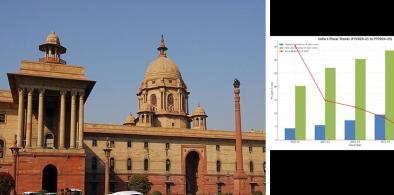
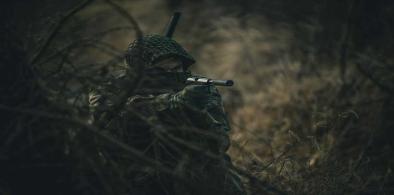
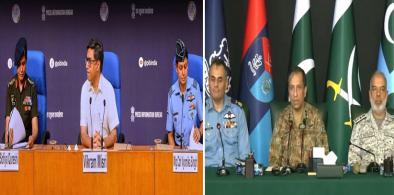
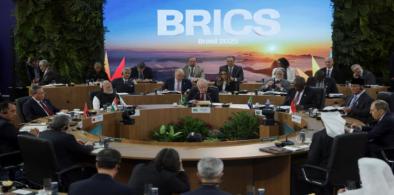
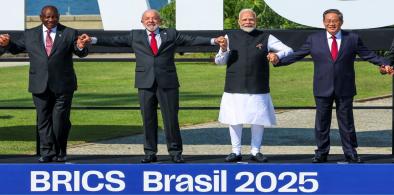
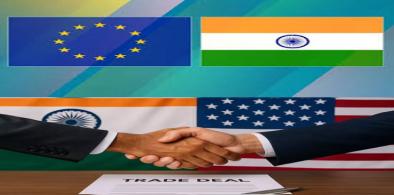

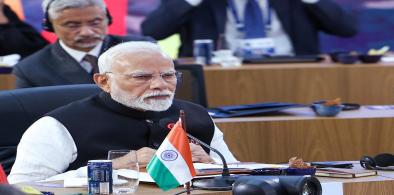

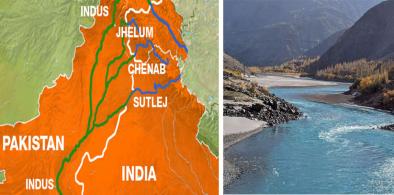





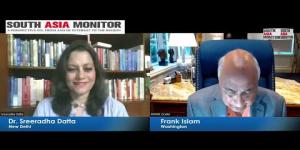
Post a Comment